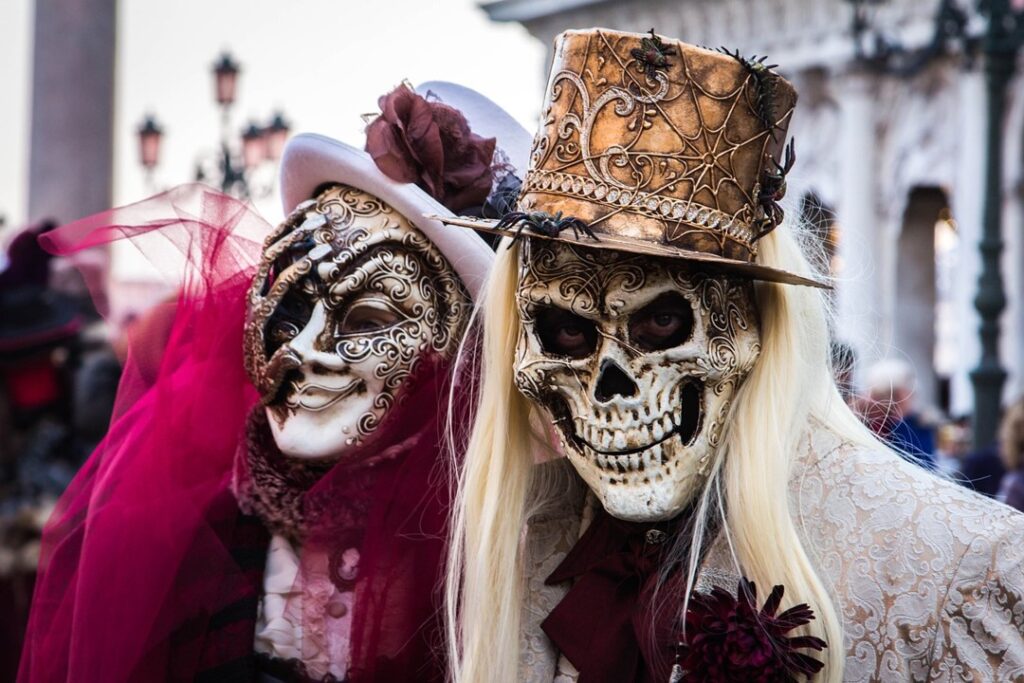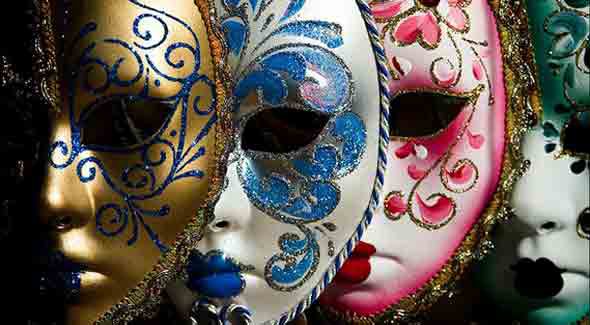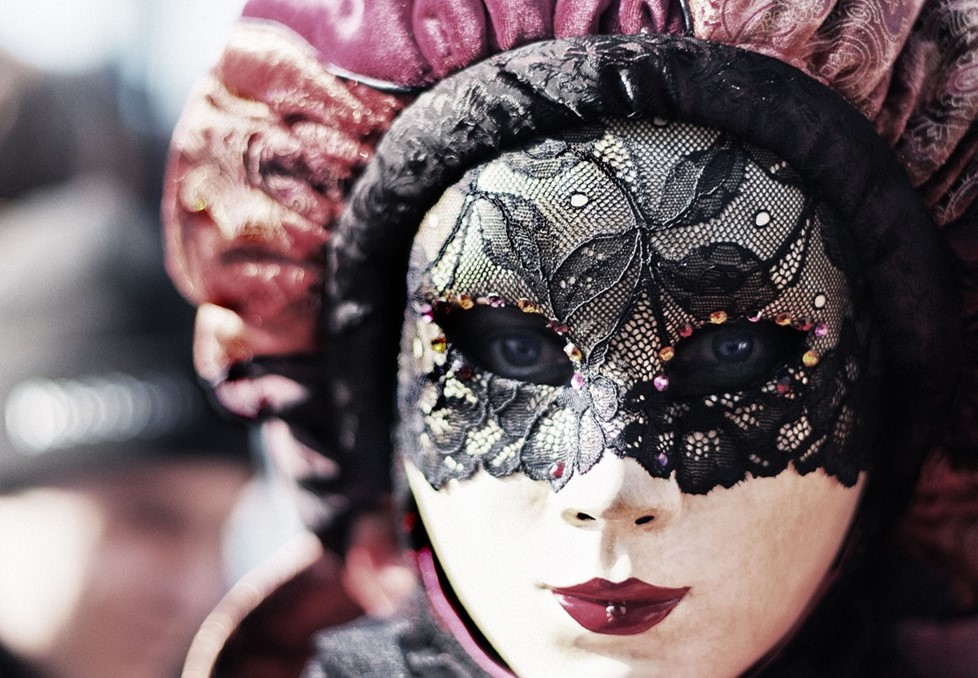Carnival is one of the happiest, most fun, and entertaining celebrations on the festive calendar.

The opportunity to dress up has always been one of the amusements offered during Carnival week. Schools, organizations, or associations organize various Carnival parades. In schools, traditionally, parades of different groups of students take place, strolling through their town or city, complemented by numerous other popular and traditional events that contribute to maintaining the unrestrained spirit of Carnival. In the rest of the world, the situation is similar. Grand Carnival festivals like Rio de Janeiro in Brazil or Venice are the most internationally recognized. Nevertheless, in different cities and countries, numerous traditional and popular activities are carried out during the week dedicated to Carnival.
Carnival festivities also involve a unique gastronomy that varies according to regions or countries. In Catalonia, “jueves lardero” or “tortilla day” involves savoring dishes where the main ingredient is the omelette, egg sausage, pork crackling cake, sardines, and the traditional wind or cream fritters typical of Lent. The gastronomic activity continues its tradition within the family nucleus. Also, during Lent, salted cod is traditionally featured in various menus, originally associated with an economical and suitable meal for the hardships of the time, although now it is a highly appreciated dish in gastronomy.
HISTORY and ETYMOLOGY
Etymology of Carnival
There are different versions of the origin of the word carnival, such as from the Latin “carnevale,” meaning the farewell to meat that will not be eaten in the following 40 days of Christian Lent before Easter. Another version is the relationship with the celebration in honor of Carna, daughter of Heleno, the goddess of beans and bacon. “Mardi Gras” in French (or “Martedi Grasso” in Italian) means “Fat Tuesday” and refers to the big meal traditionally held before Ash Wednesday when the Lenten fast begins. It is a celebration of the world turned upside down. Everyone dresses up, and these days are filled with games, dances, and pranks. The carnival celebration itself is a great game.
Origin
According to historians, the origin of this custom dates back over 5000 years to the time of the Roman Empire, where similar occasions were celebrated and later spread to the rest of Europe and America through Portuguese and Spanish navigators. Another version suggests that agricultural communities needed to consume the winter foods preserved by the cold before the arrival of spring and its higher temperatures when perishable foods were at risk of spoiling. They would then celebrate a grand feast to consume all animal and perishable products before fasting until the spring equinox on March 21 (in the northern hemisphere), where they would have access to new seasonal products. This version assumes that different religions adapted their stories and myths according to these natural needs.
Carnival and Religion
Carnival is also closely related to Christian tradition. It is celebrated a few days before Ash Wednesday, the beginning of Lent. In Christian tradition, the 40 days of Lent are a time of sacrifice, during which overindulgence, for example, excessive eating, is not allowed. Therefore, during Carnival, there is more freedom, and many rules are broken. It is a time to do everything that will not be allowed later. Two characters historically represent the struggle between what Carnival and Lent represent. On one side, King Carnival, a fat, jester-like character who indulges in drinking and revelry. On the other side, his enemy, Old Lent, a seven-legged old woman who fasts and is a vegetarian.
Carnival Today
Today, Carnival is a festive celebration characterized by games, music, banquets, dances, and general merriment. It is called so, by analogy, to any other celebration of this kind where the lack of control and permissiveness characteristic of this festival in its origin prevails.
Around the world, Carnival is a cause for grand celebrations and parties, with some places being well-known for their spectacular productions and attractiveness for both residents and tourists seeking to witness local traditions. The Carnival of Rio de Janeiro in Brazil, the one in Venice, Italy, or the one in New Orleans, United States, are among the most resonant. Each with different customs and styles, they form part of their own traditions and are a clear reflection of the personalities of each culture.

CULTURAL AGENDA
The Carnival Celebration has a significant impact in Catalonia, starting on “Fat Thursday” and concluding on “Ash Wednesday” with the burial of the sardine. For seven days, a complete festival takes place just before the beginning of the Lenten period.
Fat Thursday: marks the beginning of Carnival. People dress up to celebrate the imminent arrival of King Carnival. According to tradition, it is a day to enjoy a rich and hearty meal. Typical dishes include egg sausage, egg sausage omelette, and pork crackling cake.
Friday: the celebration is in full swing, and everyone celebrates the arrival of Carnival. Schools hold their costume parties, and festive groups finalize the last details.
Weekend: it’s the peak of fun. On Saturday, King Carnival, the king of mischief, arrives until Wednesday. A procession travels through the entire town, and a proclamation is read, filled with jokes about many things. Sunday marks the biggest Carnival parade. In the past, there were battles with oranges, tomatoes, and eggshells filled with flour. Some cities still dedicate a morning to this tradition. Nowadays, the norm is battles with confetti and streamers.

We highlight some of the most significant and popular Carnival Festivals in the CULTURAL AGENDA of Catalonia
Sitges.- The coastal town in the Garraf region celebrates its Carnival, with a history of over 100 years. The most notable events are the “Rua de la Disbauxa” and the “Rua de l’Extermini,“ featuring over 2.000 participants in costumes accompanied by more than 50 floats.
Tarragona.– This year extends until mid-March. Rooted in Roman festivities and closely tied to gastronomy, it features the “Disfressa d’Or,” its parade (“Rua”), and the “Mascarada de Dol.”.
Torelló.- Also known as the “Carnaval de Terra Endins,” in the first week of March, it celebrates one of the most well-known festivals. Among its main events of the week, the Carnival of the Elderly and the “Pullasso” stand out. The main parade will be on Saturday, February 10.
Vilanova i la Geltrú.-Declared a National Festival of Interest in 1985. It begins with the “Ball de Mantons.” Saturday is the day of the mascarots, and Sunday is the grand day of “les comparses.“.
Platja d’Aro.- The Carnival of Platja d’Aro is another prominent one in Catalonia. Its program includes the Grand Parade of Floats and Groups, becoming the highlight of the festival. Celebrated for 40 years, it is one of the events that has made this Costa Brava town famous.

E Business Cars, collaborates with various entities and organizations linked to the culture of our country, allowing us to coincide with the different events scheduled during these Carnival days, especially in the metropolitan area of Barcelona.
It is a great experience to share transportation to the various events organized in Catalonia during this Carnival week…
And if there is a desire to travel more, one can enjoy the grand celebrations of Carnival in different parts of the world:
- 1. Tenerife Carnival, Spain
- 2. Venice Carnival, Italy
- 3. Rio de Janeiro Carnival, Brazil
- 4. Binche Carnival, Belgium
- 5. Mardi Gras, New Orleans, USA
- 6. Cadiz Carnival, Spain
- 7. Oruro Carnival, Bolivia
- 8. Notting Hill Carnival, London

